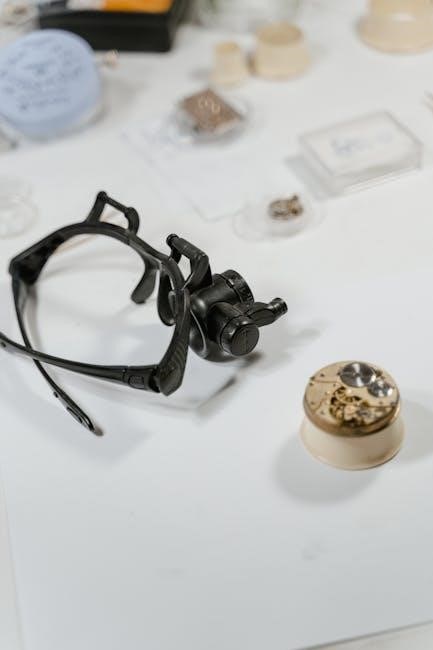Welcome to the comprehensive guide for assembling your L-shaped desk! This manual provides step-by-step instructions to help you build your desk efficiently and safely.
Importance of Reading the Manual
Reading the manual is essential for a successful and stress-free assembly of your L-shaped desk. It provides detailed, step-by-step instructions to ensure all parts are correctly identified and assembled. The manual highlights safety precautions, such as avoiding over-tightening screws or improper lifting, to prevent damage or injury. By following the guide, you can avoid common mistakes, like misaligning components or missing critical steps, which may lead to instability or structural issues. Additionally, the manual includes diagrams and illustrations to clarify complex assembly processes. Taking the time to read and understand the instructions will save you time, reduce frustration, and ensure your desk is assembled safely and efficiently. Proper assembly also guarantees the desk’s longevity and stability, making it a worthwhile investment for your workspace.
Safety Precautions and Tips
Ensuring safety is crucial when assembling your L-shaped desk. Start by wearing protective gear, such as gloves and safety glasses, to prevent injuries from sharp edges or flying debris. Work on a stable, flat surface and avoid overreaching or lifting heavy components without assistance. Use tools correctly to prevent slipping or stripping screws. Keep children and pets away from the assembly area to avoid distractions. Follow all weight limits specified in the manual to ensure the desk’s stability. Regularly check for loose screws and tighten them as needed. Avoid using power tools near water or in humid environments. Proper ventilation is essential, especially when handling materials like wood or metal. By adhering to these precautions, you can assemble your desk safely and efficiently, ensuring a secure and functional workspace for years to come.

Preparing for Assembly
Begin by unpacking all components and verifying their completeness. Gather necessary tools and ensure a clean, spacious workspace. Organize parts for efficient assembly.

Unpacking and Checking All Parts
Start by carefully unpacking the desk components from the packaging. Lay out all parts, including panels, legs, crossbars, and hardware, on a soft surface to prevent scratching.
Refer to the provided parts list to ensure all items are included. Check for any damage or missing components. If anything is damaged or missing, contact the manufacturer immediately.
Organize the parts by type, such as legs, frames, and hardware, to streamline the assembly process. This step ensures everything is accounted for and ready to use.
Tools and Materials Needed
To assemble your L-shaped desk, gather the necessary tools and materials beforehand. Typically, you’ll need a screwdriver, Allen wrench, and possibly a wrench for twist-lock fasteners.

Ensure you have all the hardware provided, such as screws, bolts, and crossbars. Some desks may require wooden pins or additional fittings for stability.
A soft blanket or mat is recommended to protect the components during assembly. Having a measuring tape handy can also be useful for alignment checks.
Workplace Preparation
Before starting assembly, prepare a clean and spacious workspace. Clear a flat, stable surface large enough to accommodate the desk components and tools.
Lay down a soft blanket or mat to prevent scratching and damage during assembly. Ensure good lighting to easily read instructions and see small parts.
Keep all parts and hardware organized, referencing the parts list from the manual. Avoid working in cramped or cluttered areas to maintain efficiency and safety.

Step-by-Step Assembly Process
Follow the step-by-step guide to assemble your L-shaped desk. Start with the legs, then build the frame, and secure the desktop. Use diagrams for clarity and ensure stability at each stage.
Attaching Legs and Crossbars
Begin by unpacking and organizing the desk legs and crossbars. Use the twist-lock fasteners to secure the legs to the bottom panel, ensuring they are tightly fitted. Repeat this process for the opposite side. Next, attach the crossbars between the legs to provide structural support. Tighten all screws firmly to ensure stability. Follow the manual’s diagrams to align the holes correctly. For added strength, double-check each connection before moving on. Use a wrench to ensure all bolts are securely tightened. This step is crucial for the desk’s stability and even weight distribution.
Connecting Side Panels and Frames
To connect the side panels and frames, align the pre-drilled holes on the panels with the frame’s mounting points. Use the provided screws and a wrench to secure them tightly. Ensure the panels are evenly spaced and properly aligned for a flush fit. Repeat this process for both sides of the desk. Once the panels are in place, tighten all connections firmly to avoid any wobbling. Double-check the alignment to ensure the frame is level and sturdy. Follow the manual’s diagrams for precise placement. This step is essential for maintaining the desk’s structural integrity and ensuring a professional finish.
Securing the Desktop Surface
Place the desktop surface onto the assembled frame, ensuring it aligns perfectly with the pre-drilled holes. Use the provided bolts to secure the desktop tightly. Start by attaching the central bolts, then move outward to avoid warping the surface. Tighten all bolts in a star pattern to ensure even pressure and stability. Check that the desktop is level and firmly attached. If necessary, adjust the frame’s legs for proper alignment. Once secured, inspect the surface for any gaps or misalignments. Ensure all edges are flush and the surface is stable. This step ensures the desk is both functional and visually appealing, ready for daily use.
Attaching Shelves and Accessories

Begin by identifying the shelves and accessories included in your L-shaped desk kit. Locate the pre-drilled holes on the side panels or frame where these components will be attached. Use the provided screws or bolts to secure each shelf, ensuring they are tightly fastened. For adjustable shelves, follow the manufacturer’s instructions to set the desired height. Attach any additional accessories, such as cable management systems or drawer slides, according to the included diagrams. Double-check that all parts are aligned properly and securely fastened. Once installed, test the shelves to ensure they are stable and evenly balanced. This step enhances the functionality of your desk, providing ample storage and organization options.

Final Tightening and Adjustments
Once all components are assembled, perform a final check to ensure all screws and bolts are securely tightened. Use an Allen wrench or screwdriver to tighten any loose connections. Verify that the desk is stable and level by placing a spirit level on the surface. If necessary, adjust the leg height or use shims to balance the desk. Double-check that all shelves and accessories are properly aligned and securely attached. Ensure that all moving parts, such as drawers or keyboard trays, operate smoothly. Make any final adjustments to achieve optimal ergonomics and functionality. Finally, inspect the entire assembly to confirm that all parts are correctly fitted and tightened. This step ensures your L-shaped desk is safe, stable, and ready for use.

Post-Assembly Checks
Ensure your L-shaped desk is stable and level by checking all parts are securely fitted and properly aligned. Test the desk’s stability and ensure all components are balanced for optimal performance and safety.
Testing Stability and Leveling
After assembling your L-shaped desk, ensure it is stable and level. Place the desk on a flat surface and use a spirit level to check the top surface and shelves. If necessary, adjust the legs by rotating the leveling feet until the desk is perfectly balanced. Gently rock the desk from side to side and front to back to verify there is no wobbling or instability. This step is crucial to prevent any structural issues and ensure the desk remains secure and functional for years to come.
Maintenance and Troubleshooting
Regularly clean the desk with a damp cloth and avoid harsh chemicals. Tighten loose screws periodically and inspect for wear. Address wobbling by adjusting leveling feet or replacing worn parts. For scratches, use touch-up paint. Ensure weight limits are not exceeded to prevent structural damage. Refer to the manual for specific troubleshooting guides and solutions to common issues, ensuring your L-shaped desk remains stable and functional over time. Always follow safety precautions and manufacturer recommendations for extended longevity.
Cleaning and Care Tips
Regular cleaning is essential to maintain the appearance and durability of your L-shaped desk; Use a soft, lint-free cloth dampened with water to wipe down surfaces, avoiding harsh chemicals or abrasive cleaners that could damage finishes. For tougher stains, a mild soap solution may be used, but ensure the surface is thoroughly rinsed and dried afterward. Avoid placing hot objects directly on the desk; use coasters or mats to prevent heat damage. For glass or metal components, a glass cleaner and a soft cloth can be used. Dust the desk frequently to prevent buildup and maintain a polished look. Never use bleach or acidic products, as they can discolor or weaken materials. Always test cleaning solutions on a small, inconspicuous area first to ensure compatibility. By following these care tips, your L-shaped desk will remain in excellent condition for years to come.
Common Issues and Solutions
During assembly, common issues may arise, but most can be resolved with simple adjustments. If the desk feels wobbly, check that all bolts are tightened evenly and consider using shims for uneven floors. Missing parts can delay assembly; verify all components against the parts list and contact customer support if necessary. Stripped screws can be avoided by using the correct screwdriver size and applying gentle, consistent pressure. Misaligned panels may require repositioning before securing with screws. If instructions are unclear, refer to online resources or video guides for clarification. Addressing these issues promptly ensures a sturdy and functional final product. Regular maintenance and inspections can prevent future problems, ensuring your L-shaped desk remains stable and reliable for years to come.